Two attempts at pizza
February 19, 2023 9:34 PM
About a week and a half ago, my boyfriend and I decided to make some pizza. We went to the store to buy some pizza dough and toppings, but after walking around for a while, we realized that the store doesn't sell pizza dough. At least we couldn't find any.
So we settled on buying some pieces of flatbread instead, and we just put some sauce and toppings on them. One pizza had pizza sauce, tomatoes, pineapples, and onions. The other had vodka sauce, green peppers, and onions.

We also experimented and put one pizza on a baking sheet, while the other one cooked directly on the rack. I don't think cooking the flatbread directly on the rack was a good idea. It took a while for the toppings to get cooked, and which made the bread way overcooked and a little too crunchy.

It didn't taste bad though! It was a nice, filling meal, but it wasn't quite pizza. It just felt like pizza toppings on a piece of bread. So, the next week, I made sure to go to Aldi to get some pizza dough so we could have a proper pizza.

Doesn't that look great?! I was so happy when I took the pizza out of the oven.

...and then I tried to cut it up and I realized it was all stuck to the pan 😱
How do I keep managing to bake things and have it stick to the pan?! I've made pizza plenty of times before and I've never had this happen! I think I've used cornmeal in the past, and I just didn't add any this time.
It still tasted pretty good, but I need to redeem myself. I will make a good pizza.
My new favorite way to prepare salmon
February 10, 2023 6:49 PM
So, I originally wasn't going to make a blog post just for this salmon, especially because the photos I took are...not great. But I just had to tell you that I spent so much time de-scaling this piece of salmon, having the scales fly everywhere and making the sink all gross and fishy, only to end up with the salmon skin sticking to the foil! I don't know why I thought it wouldn't stick. I always buy salmon with skin on it, because I figured the skin would stick to the pan and I'd easily pull off the meat from it.
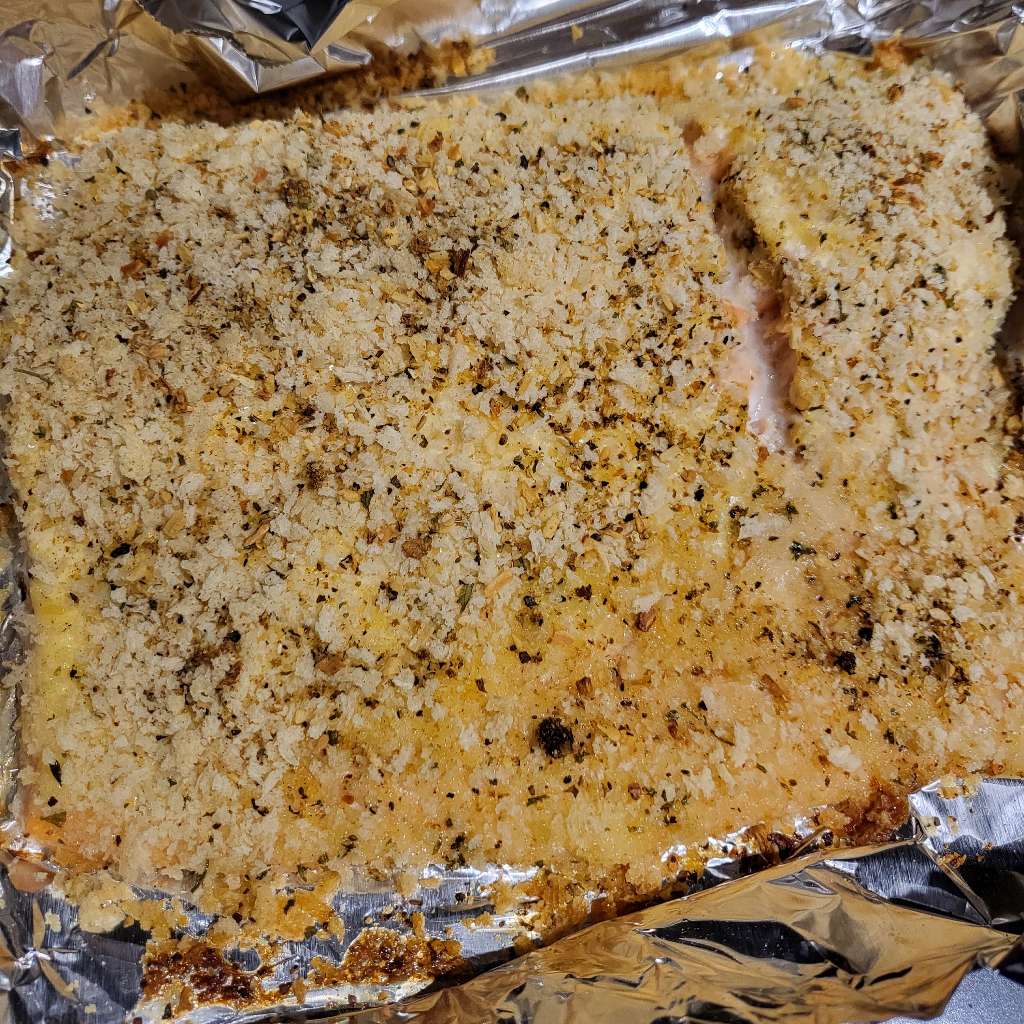
Well, at least I remembered to cook the salmon skin side down.
Two years ago, I had attempted to make this same salmon dish, and it was a complete failure. I must be getting better at this whole cooking thing, because I tried to make this again earlier this year, and it was so good and so easy. I didn't even have to measure anything! In the past, I wouldn't know what to do with just a list of ingredients, but I think I'm getting more comfortable with just sprinkling and pouring things and going by feel.
So, I wanted to take it up a notch by also de-scaling the salmon. Next time, I'll actually spray some oil or butter on the baking pan and hopefully it won't stick. And eventually I will post this recipe on the blog! But today's not that day.

I also made a salad using some leftover iceberg lettuce, and I even blended up some carrot ginger salad dressing. It was a very good meal despite some wasted efforts.
Home cooked meals
February 4, 2023 10:16 PM
Man I have been so busy with work and various trips that I have not been doing much cooking. And I can feel it. So much eating out and eating junk food. But it is now February 2023 and I am finally feeling a little less busy.
I don't have a nice theme to tie these all together, but here are a few meals that I cooked this past week:
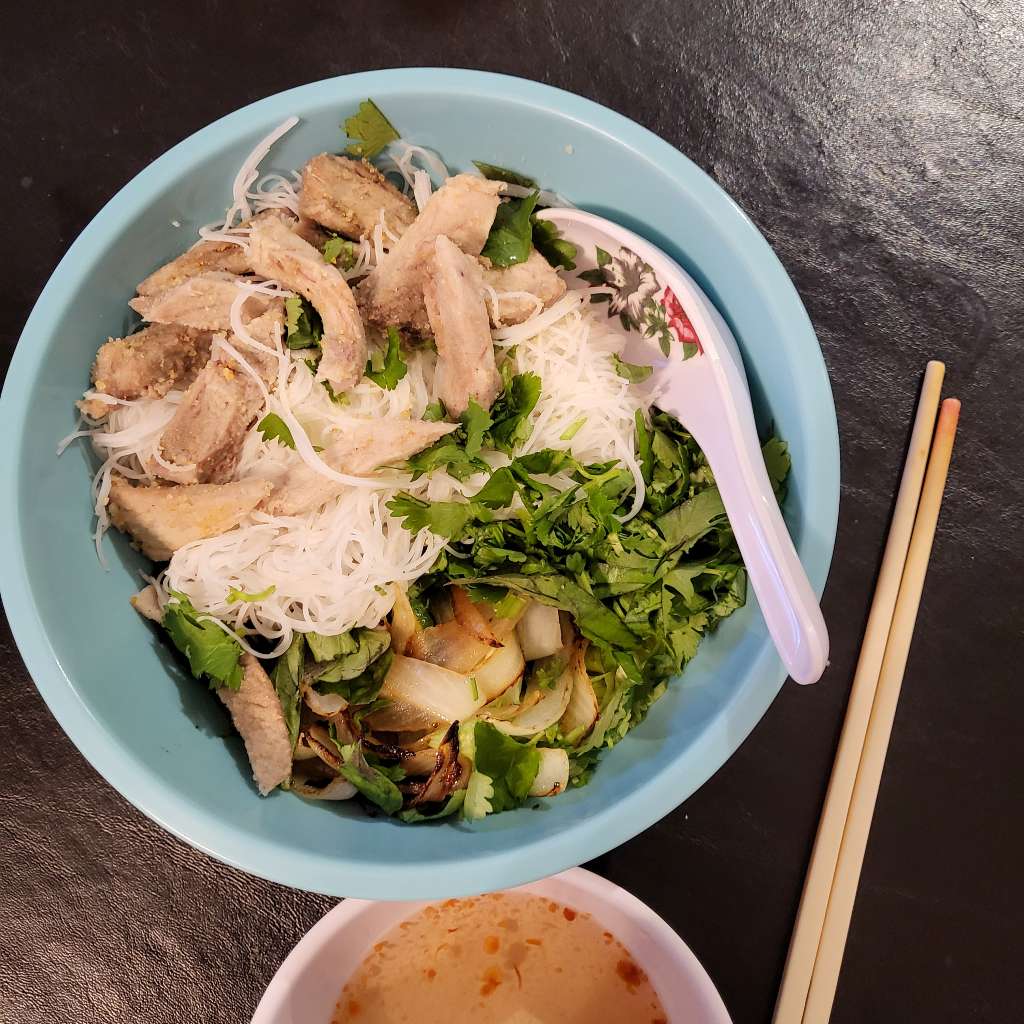
I had four pieces of rice paper left in my cabinet, and while I don't have a picture of the spring rolls I made, I do have a picture of the salad I made with all of the same ingredients. I cooked some pork butt, and tossed it in toasted rice, which is something that my aunt taught me how to do. One day I'll post a recipe for that pork.
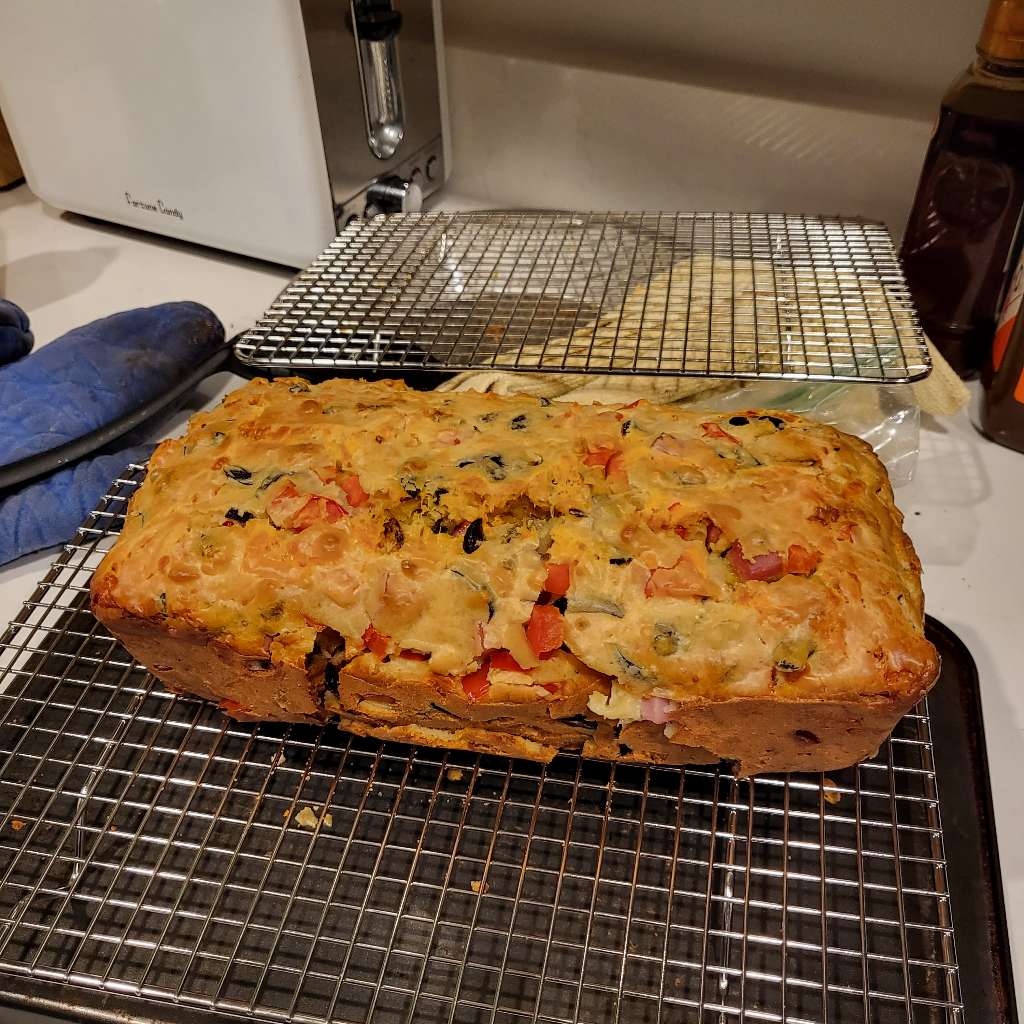
One of my friends has really been in the mood for "savory bread" lately, but I was definitely not prepared to make bread. She looked up a recipe to see if she could find something easy, and we decided to make this savory quick bread with cheese and olives, which is bread in the same sense that banana bread or zucchini bread is bread. Basically, it's cake in the shape of a bread loaf.
We added a bunch of extra things that the recipe didn't even call for, like green onion and sun dried tomatoes. I think we went a little overboard. This recipe also called for four eggs, which is way too many eggs, especially considering how expensive eggs are nowadays. But what we didn't add was salt. Bad decision. You always need salt. The recipe simply said to "salt to taste", but how am I supposed to salt to taste when there's raw flour and eggs?! I can't taste that!
I was a little worried I was going to hate this because I don't like egg-y things, but it turned out to be...okay. Not great. Would not make this recipe again. I'd probably try a different bread recipe though.
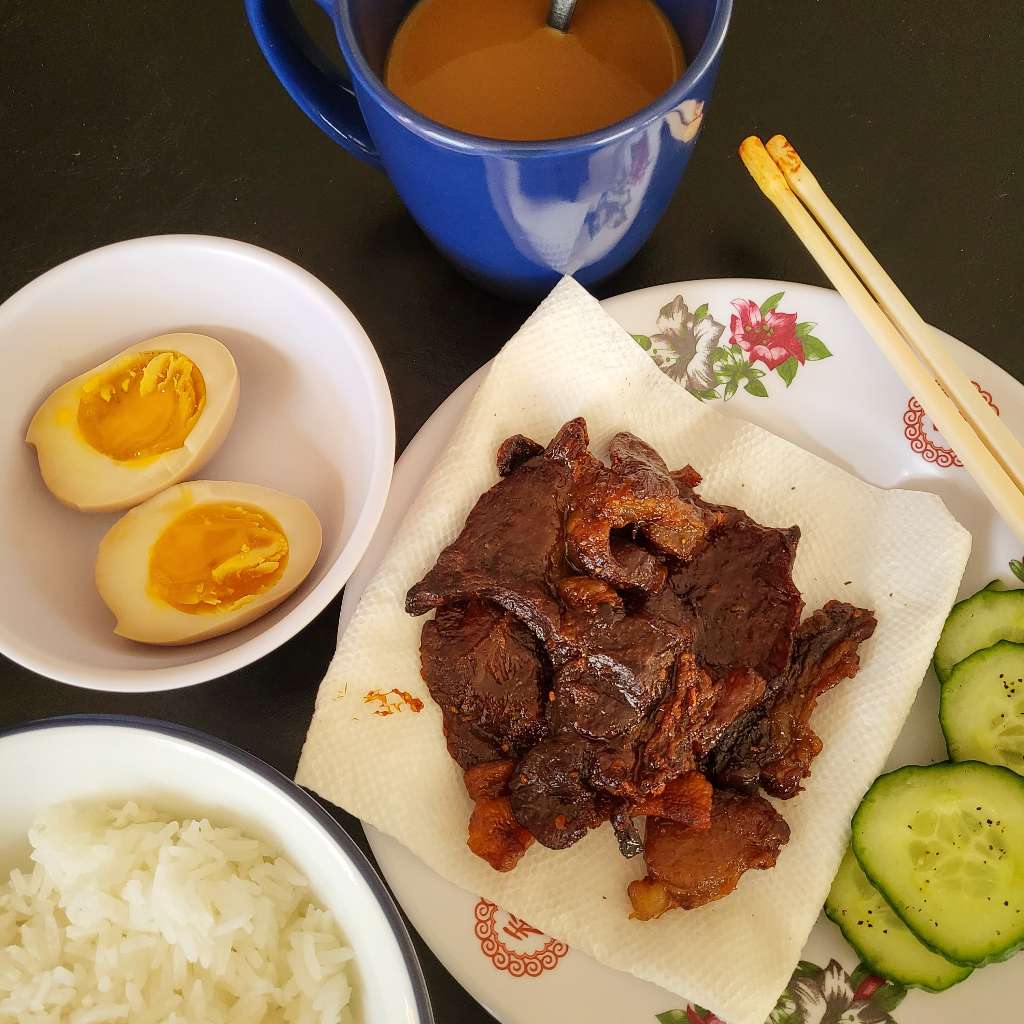
And finally, here's my breakfast from this morning that I spent way too much effort on. It was worth it though. My family gave me some beef jerky, and I just love the combination of beef jerky and white rice. I also added a marinated soft boiled egg and some cucumber slices to trick myself into thinking this is a well balanced meal.
A very involved beef stew
December 29, 2022 9:28 PM
Last week, after a very exhausting 4 days of work, I was excited to have a Friday off so I could spend some time doing some slow and chill cooking. I had a few bay leaves in my freezer that I wanted to use up and the cold weather has made me want some beef stew. I've made beef stew in the past, and I've been pretty successful, but this time I wanted to kick it up a notch.
Kenji's beef stew recipe came up in my youtube feed, and even though the video itself is a whole 37 minutes and 54 seconds long, I decided to watch it and I decided to make it. The recipe states that it takes 3 hours 10 minutes, and at my pace, I need to double all recipe times, so I know this is going to be an all day affair.

Well, I woke up on a very, very cold Friday and saw that my power was out. 😧 I paced around my apartment, wondering what to do (I couldn't even make coffee!), but then...the power came back on. Okay, I'm making this beef stew.
(Had I known that the power would flicker off and on at least 20 more times during the day, I may have decided to do this a different day)
So in the video that I watched, Kenji cuts up all the veggies while his steaks are searing, and he still has time left over to just wait for it to finish searing. That was not my experience. I definitely should have cut up all the veggies in the beginning. I think it took me at least half an hour to cut them all up. Maybe an hour. I also should not have seared them on HIGH. My kitchen very quickly became a smoky mess.
And then when it came to blending up the broth, I realized that my little nutribullet is too small! (And I wasn't gonna use the food processor after what happened when I made those beef tacos) So I blended up a small amount of the chicken broth with the other ingredients and just mixed them all together in a saucepan. I attempted to add gelatin, but it all immediately clumped up. (Apparently I should have "bloomed" it first. Whatever that means)
Oh, but the worst part was dealing with the pearl onions. Kenji recommends just using frozen ones. I really should have listened to him, but I was at Whole Foods, and they only had fresh pearl onions, and I didn't feel like going to another store. So I'm standing at my counter, cutting off the nubs of the onions and peeling them and tears are streaming down my face.

Anyway, I got everything prepped and I figured the bulk of the actual cooking part would be easier. I threw some veggies in the pot, and I threw my cubed beef into the pot, and I threw in some wine, and...the power went out again 😑
Fortunately, that didn't last too long, maybe five or ten minutes. Unfortunately, this would happen at least twenty more times while my stew was cooking. I managed to eventually get it to a simmer and into the oven, but this was no set-it-and-forget-it experience. I had to sit in my living room the whole time, making sure I was aware every time the power went out so I could turn the oven back on 😣
But I did it. I let it cook for a while, and then I took the pot out of the stove, and it wasn't tender enough, so I let it cook for even longer, and eventually the meat got to a consistency I was happy enough with. I started prepping at about 1pm, and it was finally done around 6:30pm.
I was exhausted all over again. I was so exhausted I forgot to add the peas. And then I forgot to take a picture!

It did taste really good though. Was it worth it? Maybe. Would I try making this again? Honestly, I would. But only if I know I have stable electricity. And frozen onions.
Spring rolls
December 27, 2022 9:31 PM
So, I made spring rolls about a month ago. Two months ago? Who knows at this point. I had this whole blog post planned out in my head about how I was making these fancy lunches, but now it's many weeks later and I don't remember any of it. But I'm looking at these food pics that I took, and I'm like, man, I really want some spring rolls.

Why did I wait so long to make this post? Well, I've had ideas brewing in my head about revamping the layout, and I didn't want to make another post until that was done. Turns out that web design is hard, and I still have things I want to change. But I think I need a break from tinkering this layout.
I don't know why I thought making spring rolls for lunch on a weekday was a good idea. Spring rolls are so much work! And then I decided to make this even crazier by seeing if there was a way I could wrap these so the shrimps were on the outside to make it all aesthetic.

Okay, I know, it's not about how it looks. It's about how it tastes. And spring rolls are delicious. But I think I actually prefer pork over shrimp. I mean, I prefer having both pork AND shrimp, but if I have to choose one, I think I go with pork.

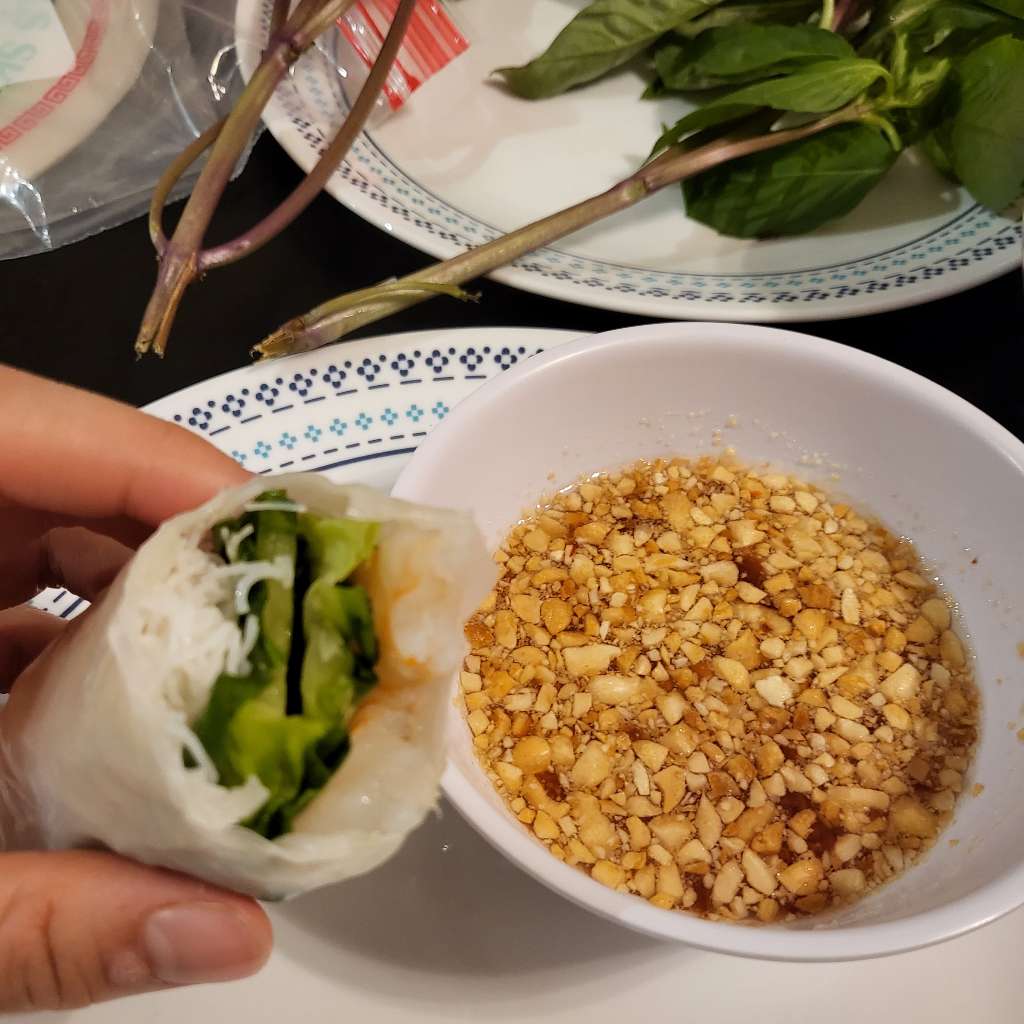
But it doesn't matter if I add pork, shrimp, chicken, whatever. Spring rolls are always good. And even though it is freezing cold outside, I could really go for some spring rolls right now.

